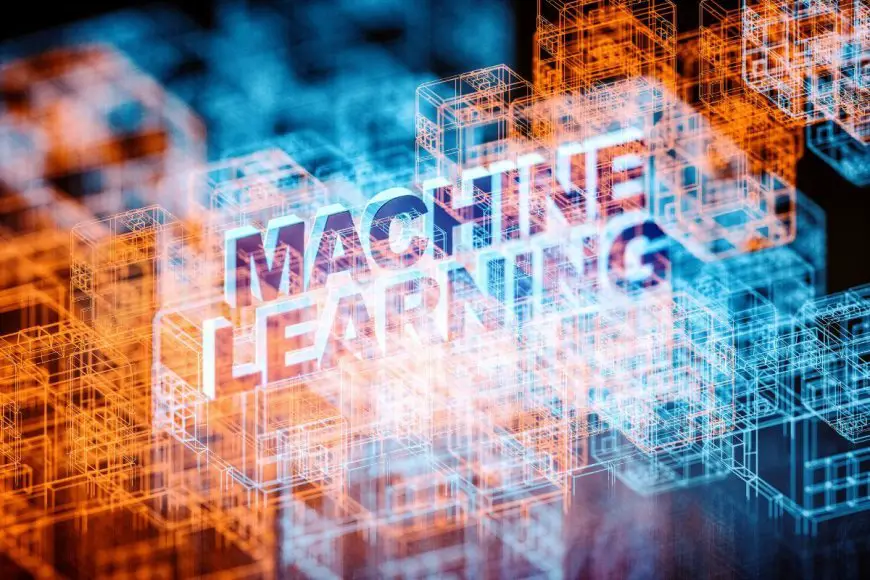What is Kernel in Machine Learning: Explained & Applied
Discover the true essence of kernel in machine learning. Understand its applications and explore different design options for optimal results.

Curious about what a kernel is in machine learning? A kernel in machine learning serves as a bridge, transforming data to enable the creation of accurate models for prediction and classification tasks.
Key Takeaways
-
Understand the basics of kernels, feature spaces, vectors, and training set in machine learning to grasp their significance in algorithms.
-
Appreciate the mathematical foundation behind kernels, feature spaces, vectors, matrix, and how they transform data in ML models.
-
Recognize the different types of kernels, feature spaces, vectors, and matrix available and their specific applications in various ML tasks.
-
Implement kernel functions effectively to enhance the performance of machine learning algorithms.
-
Unveil the mechanism of kernels and how they enable complex decision boundaries in ML models.
-
Make informed decisions by choosing kernels wisely based on the specific requirements of your machine learning tasks.
Kernel Basics
Definition
Kernel machines are algorithms used for pattern analysis, with linear classifiers applied to solve nonlinear problems. These algorithms rely on user-specified kernels to transform data into a higher-dimensional target space.
Importance
Kernel machines play a crucial role in understanding patterns within datasets. They excel in identifying various types of relationships that may not be linear. The Representer theorem simplifies complex feature maps by reducing them to finite dimensions.
Kernel Operations
Kernel functions facilitate operations in high-dimensional spaces by computing inner products efficiently. The kernel trick allows for the computation of inner products without explicitly transforming data into high dimensions. This approach offers computational advantages over traditional coordinate-based methods.
Informal Explanation
Simple Analogy
Imagine kernel functions as translators in a foreign land, converting your words into a local dialect effortlessly. Similarly, in machine learning, kernel tricks act as interpreters, transforming data into a format that algorithms can interpret easily. These functions work like magic, enabling computations in spaces that are not directly visible or defined by the original data points.
For instance, think of kernel trick as a language translator at a bustling market. Instead of struggling to communicate directly with every vendor, the translator helps you convey your message effectively without knowing every vendor's language. In machine learning terms, this translates to performing complex calculations without explicitly handling all the intricate details of the data.
Kernel Trick
Kernel functions play a crucial role in facilitating inner product computation within implicit feature spaces. By utilizing these functions, machine learning models can efficiently process and analyze data without explicitly mapping them into higher-dimensional spaces. This approach enhances computational efficiency significantly, making it easier for algorithms to handle complex tasks seamlessly.
The computational efficiency achieved through the kernel trick is remarkable. It allows algorithms to perform intricate operations swiftly by leveraging the power of kernel functions to simplify complex mathematical computations. Moreover, these functions exhibit remarkable versatility across various data types, enabling them to adapt and excel in diverse scenarios where traditional methods may struggle to deliver accurate results.
Mathematics Behind Kernels
Kernel Trick Mathematics
Kernel trick in machine learning relies on kernel functions to compute inner products between data points. These functions allow algorithms to operate in a higher-dimensional space without explicitly calculating the new coordinates. By leveraging mathematical transformations, kernels make complex problems solvable through simpler linear operations.
The theoretical underpinnings of kernel trick lie in reproducing kernel Hilbert spaces (RKHS). RKHS provides a framework for understanding how kernels map data into higher dimensions, enabling algorithms like Support Vector Machines (SVMs) to effectively separate classes that are not linearly separable.
Enhancing Algorithm Performance
Kernel methods play a pivotal role in enhancing algorithm performance by enabling non-linear decision boundaries. The kernel perceptron algorithm, for instance, can classify data points that are not linearly separable by projecting them into a higher-dimensional space where separation is possible.
Support Vector Machines (SVMs) leverage kernels to transform input data into feature spaces where classes become separable by hyperplanes. This transformation allows SVMs to efficiently classify complex patterns and generalize well on unseen data, making them popular choices for various machine learning tasks.
In pattern analysis, kernel methods have revolutionized the field by offering powerful tools for handling intricate relationships within data. By incorporating kernels into algorithms, researchers and practitioners can tackle diverse application areas such as image recognition, natural language processing, and bioinformatics with improved accuracy and efficiency.
Types of Kernels
Popular Kernels
Popular kernels in machine learning include Gaussian processes, PCA (Principal Component Analysis), and other variations. These kernels play a crucial role in various machine learning models and algorithms. Gaussian processes are commonly used for regression tasks due to their flexibility and ability to model complex relationships within data. On the other hand, PCA is often applied for dimensionality reduction, allowing for efficient data representation and visualization.
When it comes to selecting the right kernel for a machine learning task, it's essential to understand the characteristics and applications of each type. Gaussian processes are suitable for handling non-linear relationships in data, making them ideal for tasks where the underlying patterns are complex and not easily captured by linear models. In contrast, PCA is beneficial for simplifying high-dimensional data into lower dimensions while preserving as much variance as possible.
Different kernels cater to specific types of data based on their unique properties. For instance, Gaussian processes work well with noisy datasets or when dealing with uncertainties in predictions. PCA, on the other hand, excels in scenarios where reducing the number of features without losing critical information is crucial. By understanding these distinctions, data scientists can effectively leverage different kernels to enhance the performance of their machine learning models.
Selecting Right Kernel
Selecting the right kernel involves considering various factors such as data type, problem complexity, and algorithm requirements. For instance, when working with structured data like images or text, certain kernels may perform better than others due to their ability to capture intricate patterns inherent in such data types. The complexity of the problem at hand plays a significant role in determining the most suitable kernel.
Matching kernels to supervised learning problems requires a deep understanding of how each kernel interacts with different types of algorithms. For example, when dealing with classification tasks that involve non-linear decision boundaries, choosing a kernel that can effectively capture these complexities is vital for achieving accurate predictions. By carefully evaluating these factors and experimenting with different kernels, machine learning practitioners can optimize model performance and achieve superior results.
Applications in ML
Supervised Problems
Kernel methods address supervised learning problems by transforming data into a higher-dimensional space. This transformation helps linearly separate data points that are not linearly separable in the original space. Kernels play a crucial role in classification and regression tasks by computing the similarity between data points.
These methods offer several advantages in solving supervised machine learning problems. Kernels enable the use of complex decision boundaries, enhancing the model's capacity to generalize well on unseen data. Moreover, they allow for efficient computation by operating implicitly in high-dimensional spaces without explicitly calculating the transformed feature vectors.
Practical Uses
In various fields, kernel methods find practical applications that revolutionize problem-solving approaches. In geostatistics, kernels are utilized to analyze spatial data and predict values at unobserved locations based on nearby observations. Bioinformatics leverages kernel methods for tasks like protein structure prediction and gene expression analysis.
The real-world impact of kernel methods is profound, especially in solving complex problems where traditional algorithms fall short. For instance, in finance, kernels help detect fraudulent activities by identifying patterns within vast transaction datasets. In image recognition, kernels enhance the accuracy of object detection and classification algorithms.
Kernel Functions
Functions Demystified
Kernel functions in machine learning simplify data analysis by capturing similarities between data points. These functions operate by transforming inputs into higher-dimensional spaces. The inner products in kernel functions measure the relationships between input data.
Kernel methods provide interpretability and flexibility in pattern analysis. They allow complex data to be represented in a more understandable manner, aiding in the detection of patterns that might not be apparent in lower dimensions.
Significance in ML
Kernel methods play a crucial role in enhancing model complexity and performance within machine learning. By utilizing kernel functions, models can effectively handle non-linear relationships present in real-world data.
The significance of kernel functions lies in their ability to improve the expressiveness of machine learning models. They enable algorithms to learn intricate patterns and make accurate predictions based on complex data structures.
Mechanism of Kernels
Behind the Operations
Kernel methods in machine learning involve complex operations that transform data into higher-dimensional spaces. These operations enable algorithms to capture intricate patterns that may not be discernible in the original feature space. The essence lies in computing pairwise similarities between data points.
Understanding kernel-based algorithms requires delving into the computational intricacies involved. By leveraging kernel functions, these algorithms can efficiently perform tasks such as regression and classification. The key lies in optimizing the computation of inner products without explicitly transforming data.
The underlying mechanisms driving kernel operations are rooted in mathematical concepts like Mercer's theorem. This theorem ensures that a function meets certain conditions to be used as a valid kernel. By satisfying these conditions, kernels can effectively map data into higher dimensions for better separation of classes.
Quantum Methods Overview
Quantum methods offer exciting possibilities for enhancing kernel machines by leveraging quantum computing capabilities. These methods can revolutionize machine learning by enabling faster computation of complex kernel functions using quantum algorithms. The synergy between quantum methods and kernel machines opens up new avenues for tackling challenging tasks.
Incorporating quantum computing into kernel-based algorithms introduces the potential for exponential speedups in computations. Quantum computers can handle vast amounts of data simultaneously, allowing for quicker processing times and more efficient model training. This advancement paves the way for significant improvements in various machine learning applications.
Exploring the intersection between quantum methods and kernel machines reveals promising prospects for advancing artificial intelligence capabilities. By harnessing the power of quantum computing, researchers aim to enhance the performance of kernel-based algorithms significantly. This collaboration signifies a paradigm shift in machine learning towards more robust and efficient models.
The Kernel Trick Unveiled
Simplifying Mathematics
Kernel methods in machine learning involve complex mathematical concepts that can be challenging to grasp. Simplify these mathematical underpinnings by breaking down the intricate formulations into more digestible parts. By providing intuitive explanations, kernel mathematics becomes more accessible to a wider audience.
Understanding kernel functions is crucial in comprehending kernel methods. These functions are used to map data into high-dimensional spaces for better separation of classes. Break down the complexities of kernel functions to showcase their significance in machine learning algorithms. By simplifying these concepts, the application of kernels becomes clearer.
Practical Application
In real-world scenarios, kernel methods find extensive applications across various domains. Through case studies, illustrate how kernel methods are implemented in practice to solve complex problems efficiently. Showcase the versatility of kernels in enhancing the performance of machine learning models.
The impact of kernel methods on decision-making processes cannot be understated. By utilizing kernels, organizations can make more informed decisions based on enhanced data analysis techniques. Discuss how kernel methods contribute to improving predictive accuracy and optimizing resource allocation strategies.
Choosing Kernels Wisely
Three Types Explained
Linear, polynomial, and radial basis function kernels are the three main types used in machine learning. Linear kernels work well for linearly separable data, while polynomial kernels are effective for non-linear data by transforming it into a higher-dimensional space. On the other hand, radial basis function (RBF) kernels are versatile and can capture complex relationships in the data.
-
Linear Kernel: Ideal for simple datasets with clear boundaries, this kernel calculates the similarity between points based on their dot product. It is computationally efficient and works best when the data can be separated linearly.
-
Polynomial Kernel: Suited for more complex data that cannot be separated by straight lines, this kernel uses a polynomial function to map data into higher dimensions. It is useful for capturing intricate patterns in the dataset.
-
Radial Basis Function Kernel: Highly flexible and capable of capturing intricate patterns, RBF kernels measure similarity based on distance from a reference point. They are suitable for nonlinear datasets with no clear boundaries.
Right Kernel for Problems
When choosing a kernel for machine learning problems, it's crucial to consider the trade-offs between different types. Linear kernels are fast but may not handle complex relationships well. Polynomial kernels can capture non-linear patterns effectively but might be computationally expensive. RBF kernels offer high flexibility but may overfit if not tuned properly.
To select the appropriate kernel, match it to the complexity and nature of your dataset. For simple linear separable datasets, a linear kernel would suffice. In contrast, complex datasets with non-linear relationships require polynomial or RBF kernels for accurate modeling.
-
Consider the nature of your data: Linear kernels work well for straightforward data structures, while polynomial and RBF kernels excel in capturing intricate patterns.
-
Evaluate computational resources: Polynomial and RBF kernels are more computationally intensive compared to linear kernels due to their complexity.
-
Tune hyperparameters carefully: Each kernel type has specific parameters that need optimization to achieve optimal model performance.
Final Remarks
Having delved into the intricacies of kernels in machine learning, you now grasp their pivotal role in transforming data into a more usable form for algorithms. Understanding the mathematics, types, applications, and mechanisms behind kernels equips you to make informed decisions when selecting the most suitable kernel functions for your machine learning tasks. The kernel trick's revelation and the importance of choosing kernels wisely underscore how these concepts can significantly enhance the performance of your models.
Incorporate this newfound knowledge into your machine learning projects to elevate their accuracy and efficiency. Experiment with different kernel functions, analyze their impact on your models, and fine-tune your approach based on the results. By mastering kernels, you empower yourself to unlock the full potential of machine learning algorithms and achieve remarkable outcomes in your data-driven endeavors.
Frequently Asked Questions
What are kernel functions in machine learning?
Kernel functions in machine learning are mathematical functions that enable algorithms to operate in a higher-dimensional space without explicitly calculating the new coordinates. They help capture complex relationships between data points and are commonly used in support vector machines (SVM) for non-linear classification tasks.
How does the kernel trick work in machine learning?
The kernel trick is a method used to transform data into a higher-dimensional space without actually performing the transformation. By using kernel functions, it simplifies computations, making complex algorithms like SVM more efficient and effective for handling non-linear patterns in data.
Why is choosing kernels wisely important in machine learning?
Choosing kernels wisely is crucial in machine learning as different kernels can significantly impact the performance of models. The right choice can enhance accuracy and generalization, while the wrong one may lead to overfitting or underfitting. Understanding data characteristics helps in selecting appropriate kernels for optimal results.
What are some common types of kernels used in machine learning?
Common types of kernels used in machine learning include linear kernels, polynomial kernels, radial basis function (RBF) kernels, sigmoid kernels, and custom-defined kernels. Each type has its own characteristics and suitability for different types of datasets and model requirements.
How are kernels applied in real-world applications of machine learning?
Kernels find applications across various domains such as image recognition, text classification, bioinformatics, financial forecasting, and more. They play a crucial role in enhancing the predictive power of models by enabling them to capture intricate patterns and relationships present in complex datasets.
What's Your Reaction?







































![MacBook Pro M5: All the features and specs you need to know [LEAKS REVEALED]](https://tomsreviewbox.com/uploads/images/202502/image_430x256_67bd6d7cd7562.jpg)



























